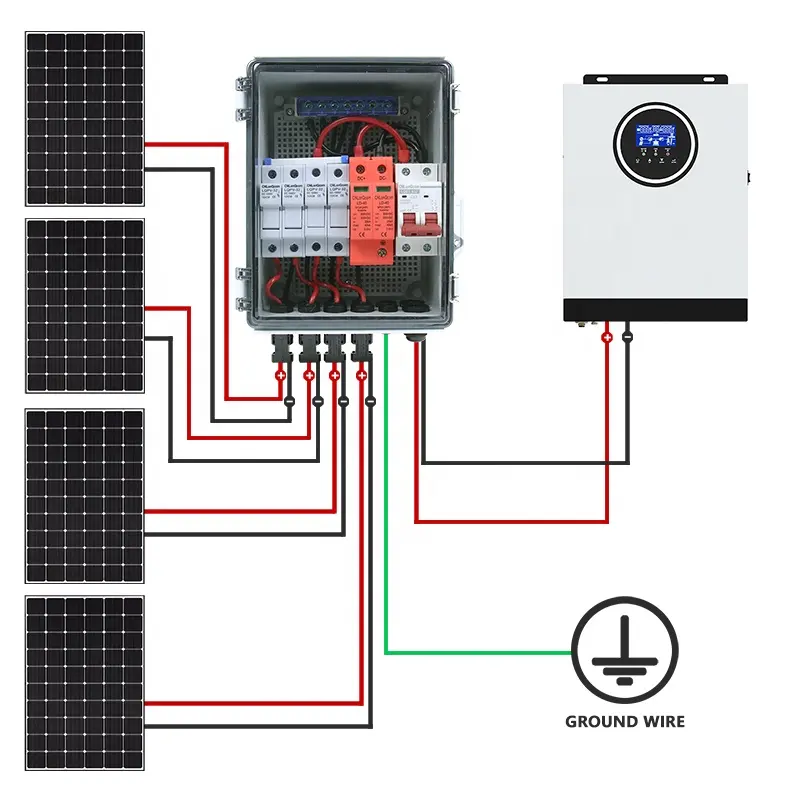Why PV Combiner Boxes Are Critical for Solar Safety and Performance
Last Updated: August 7, 2025
Introduction
PV combiner boxes play a foundational role in the safe and efficient operation of solar power systems. Far more than a passive connection point, these boxes integrate electrical protection, system monitoring, and smart energy management into one centralized hub. This article explores why PV combiner boxes are essential components in any high-quality photovoltaic installation.
1. Centralized Safety Control
Combiner boxes serve as centralized points for fuses, breakers, and disconnects—vital elements for protecting the system during overcurrent, short circuits, or maintenance. This centralized approach ensures quick and safe shutdowns when needed.
2. Fault Isolation and Maintenance
In large PV arrays, faults such as ground faults, line-to-line shorts, or arc faults can be hard to locate without proper isolation points. A PV combiner box allows operators to isolate individual strings, speeding up diagnostics and minimizing system downtime.
3. Surge and Overvoltage Protection
Lightning and transient surges pose a serious threat to solar equipment. High-quality PV combiner boxes include Surge Protection Devices (SPDs) that prevent these events from damaging downstream components like inverters or batteries.
4. Compliance with Electrical Codes
Codes such as NEC 690 in the U.S. and IEC 61439 globally mandate proper circuit protection and disconnect means. PV combiner boxes make it easy to meet these requirements, speeding up inspection and grid connection processes.
5. Enhanced Energy Efficiency
By consolidating wiring and reducing energy loss through heat in long cables, combiner boxes help improve overall system efficiency. Quality design also ensures low internal resistance, maintaining consistent energy flow.
6. Integration with Monitoring Systems
Modern combiner boxes are often equipped with sensors and digital interfaces (like Modbus or RS485) for real-time current, voltage, and temperature monitoring. This data enables predictive maintenance and optimized performance.
7. Protection of Inverter and Critical Equipment
Damage to inverters can be costly. By placing a combiner box between the PV array and inverter, you create a protective buffer. SPDs, fuses, and disconnects absorb faults before they reach sensitive downstream electronics.
8. Physical and Environmental Protection
Combiner boxes offer protection from harsh environmental conditions including dust, moisture, UV rays, and salt spray (with NEMA 4X/IP66-rated enclosures). This keeps internal connections dry, cool, and corrosion-free.
9. Supports System Scalability
For solar systems designed to grow over time, combiner boxes offer an easy way to integrate new strings or panels. Some boxes feature modular busbar arrangements that support expansion without full system rewiring.
10. Improves ROI and System Uptime
By preventing damage, reducing downtime, and simplifying maintenance, a well-designed combiner box directly contributes to improved return on investment (ROI) and longer system life.
Conclusion
PV combiner boxes are not just optional accessories—they are essential for ensuring the safety, performance, and compliance of solar power systems. From lightning protection to real-time monitoring, these boxes deliver critical functions that protect your investment and keep your solar power running reliably for decades.
Always choose a certified, high-quality combiner box tailored to your specific system’s voltage, current, and environmental needs. In doing so, you lay the foundation for a safe, scalable, and efficient solar future.



